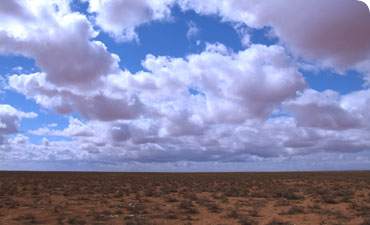In the field
Although most meteorite research is performed in a laboratory, fieldwork is the only way to collect meteorites and to study the effects of impacts.
Finding a meteorite is not easy
Finding meteorites is not easy. Meteoriticists scour the Earth looking for these rare rocks. Large distances are covered, often on foot and staring at the ground, just to find one or two meteorites. Most are found in hot or cold deserts, where they erode slower and are less likely to be obscured by vegetation. Antarctica is the best place to find meteorites. This is because meteorites are consumed by and stored in the ice. This ice is continually moving. When it hits an obstacle, like the Transarctic Mountains, it gets pushed upwards and reveals the meteorites. A number of scientists from the Natural History Museum have been to the Antarctic to find meteorites.
Learning about impacts
Studying the effects of meteorite impacts also involves getting out into the field. There are around 140 meteorite craters exposed to Earth's surface. Geologists study the structure and rocks of these craters to try and understand how they were made. Geophysicists can also use Earth's magnetic field and seismic waves to investigate craters that have been covered up over time.
When a meteorite crashes to Earth, the impact causes debris to be thrown up. This falls as layers of dust for miles around. Meteoriticists can study these layers to learn about the effect that the meteorite impact had on its surroundings. Dust thrown up from very large impacts can be thrown into the atmosphere and travels all over the world. By studying this we can learn about the effect that meteorites can have on the whole planet.
Toolbox

Our scientists study the snails that host the schistosomiasis parasite, which causes a disease that affects nearly 200 million people.
